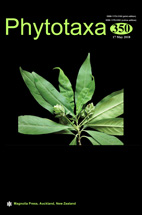Abstract
In this study, we systematically studied the microsporogenesis, megasporogenesis, as well as development of male and female gametophyte of Polygonatum macropodum and P. sibiricum using the conventional paraffin sectioning technique. Our results showed that 1) microsporocytes cytokinesis is of the successive type; 2) microspore tetrads are tetragonal or tetrahedral; 3) mature pollen grains are two-celled or three-celled; 4) ovary is superior and trilocular, with axile placentas bearing 4–6 anatropous per locule; 5) ovules are anatropous, crassinucellate and bitegmic, with micropyle formed by the inner integument; 6) megaspore tetrads are linear or T-shaped; 7) embryo sac development is typically of Polygonum-type. The embryological features of Polygonatum support its inclusion of Asparagaceae in Asparagales.

